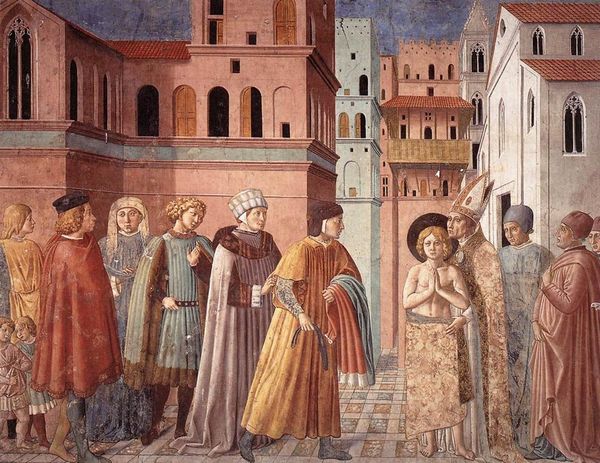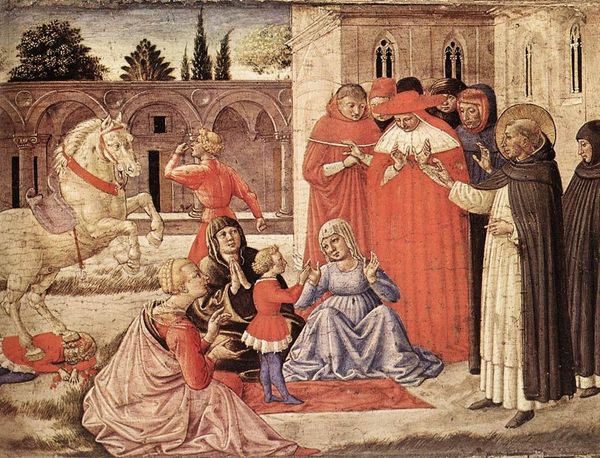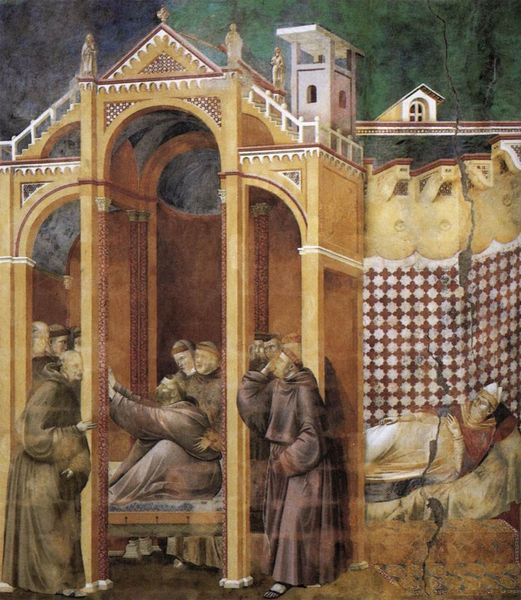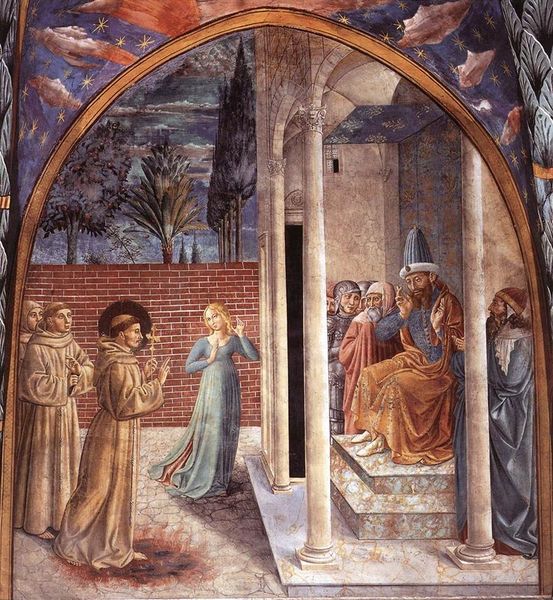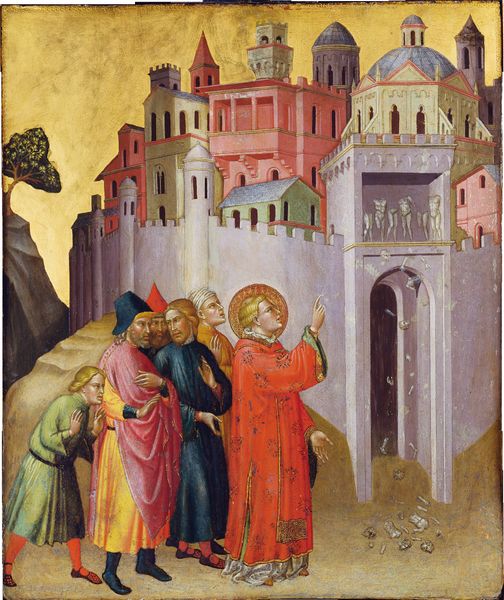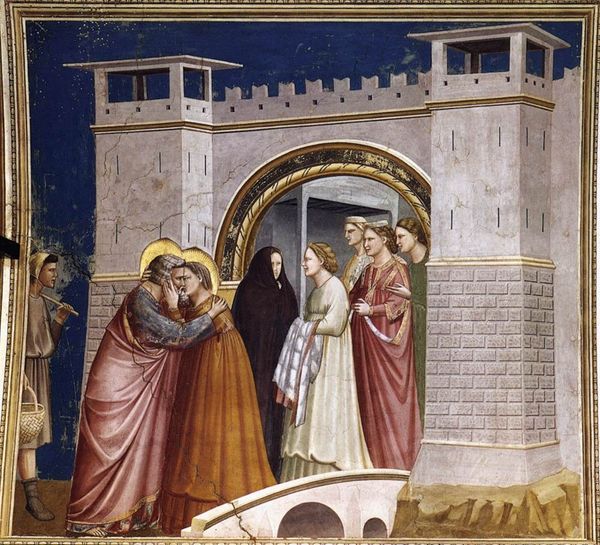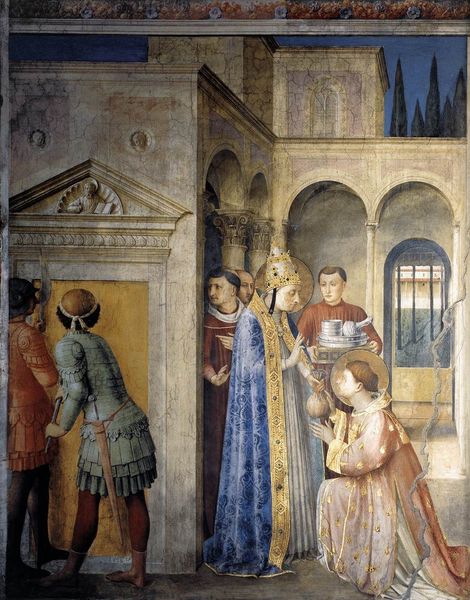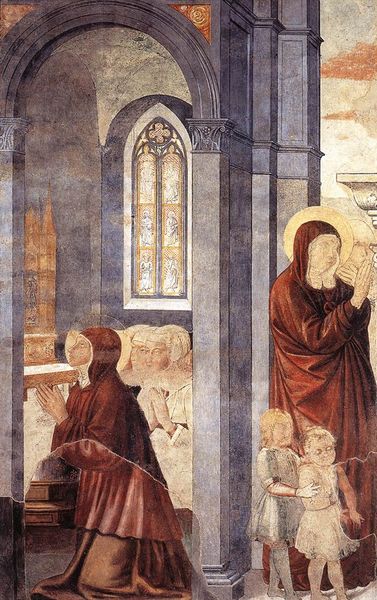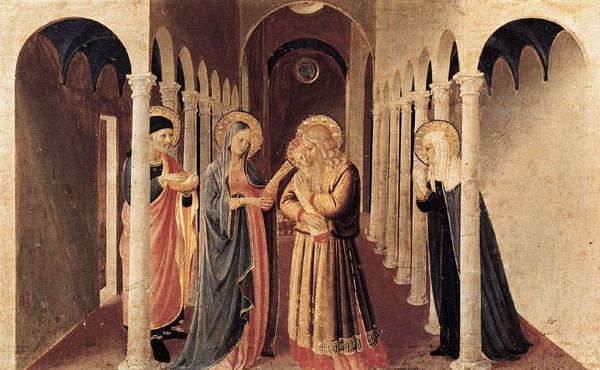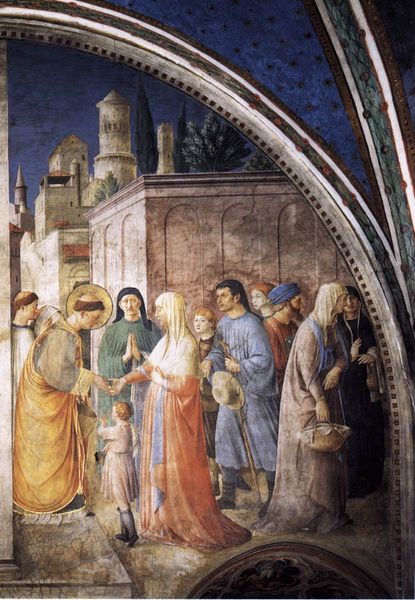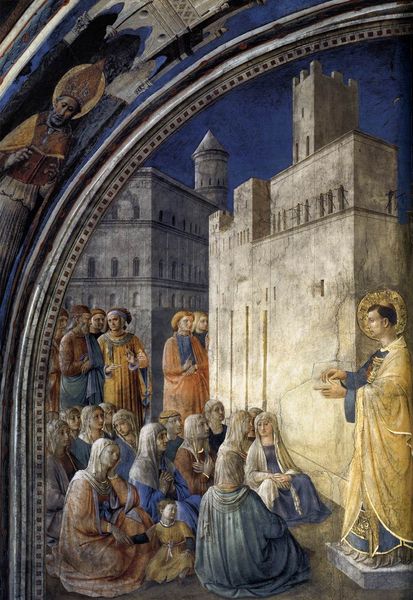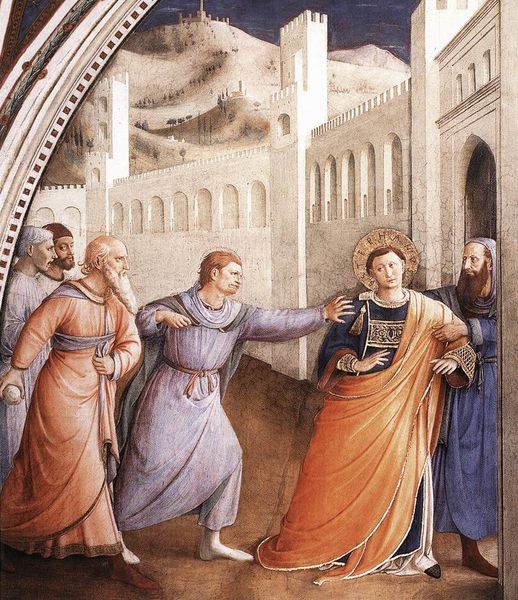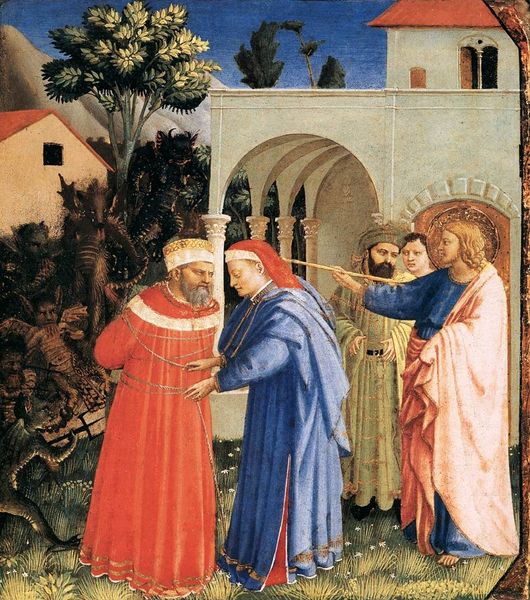
tempera, painting, fresco
#
narrative-art
#
tempera
#
painting
#
landscape
#
figuration
#
fresco
#
oil painting
#
cityscape
#
history-painting
#
italian-renaissance
Copyright: Public domain
Curator: Let’s take a closer look at Benozzo Gozzoli’s fresco, "The Departure of St. Jerome from Antioch," created around 1452. Editor: My immediate impression is one of melancholic grandeur. There’s a stillness, a somber quality to the figures juxtaposed against this incredibly detailed cityscape that makes you wonder what they are feeling. Curator: Indeed. Gozzoli was known for his ability to weave elaborate narratives within equally elaborate architectural settings. This piece showcases not just a historical event – St. Jerome’s departure – but also offers a glimpse into the sociopolitical landscape of the time, using the city as a silent character in the drama. Editor: It feels almost like a stage set, doesn’t it? These individuals, particularly St. Jerome depicted here as a woman in this image, are literally leaving the confines of a society, marked by very evident structural and societal norms to embark on a journey that ultimately marks her individual and theological independence. There's something very potent about the silent witnesses of the wall and tower in this painting. Curator: Exactly, the painting allows a subtle tension, between her agency, yet dependence on the institutions of faith, like a dance of devotion within complex societal pressures. It speaks to how religious figures were and are inextricably linked to their social and physical environment. Editor: And there’s something fascinating about the flattening of space, too. It draws attention to the power dynamics present. Her red attire suggests influence. This scene makes you consider the weight of the world that she leaves behind. Curator: Yes, and that detailed cityscape is a world of its own—a testament to Gozzoli's artistic talent but also a commentary on urban life in 15th-century Italy and how religion and politics constantly impacted lived reality. Editor: Considering this painting now, from a contemporary vantage point, invites crucial discussion regarding personal convictions versus public expectations, which were true struggles for people even centuries ago. It resonates. Curator: I agree. Gozzoli provides us a mirror not just reflecting the past but encouraging discussions around these ongoing dilemmas around belief, identity, and public action.
Comments
No comments
Be the first to comment and join the conversation on the ultimate creative platform.
